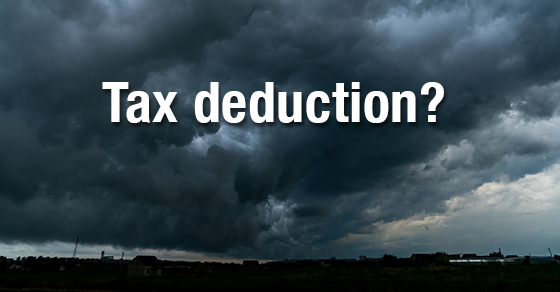No matter where you live, unexpected disasters will potentially damage your home or personal property. Prior to the Tax Cuts and Jobs Act (TCJA), eligible victims of these casualties could claim a deduction on their tax returns, but there are new restrictions that make it more difficult to take.
What’s considered a casualty for tax purposes? It’s a sudden, unexpected or unusual event, such as a hurricane, tornado, flood, earthquake, fire, act of vandalism or a terrorist attack.

More difficult to qualify
For losses incurred through 2025, the TCJA generally eliminates deductions for personal casualty losses, except for losses due to federally declared disasters. For example, during the summer of 2021, there have been presidential declarations of major disasters in parts of Tennessee, New York state, Florida and California after severe storms, flooding and wildfires. So victims in affected areas would be eligible for casualty loss deductions.
Note: There’s an exception to the general rule of allowing casualty loss deductions only in federally declared disaster areas. If you have personal casualty gains because your insurance proceeds exceed the tax basis of the damaged or destroyed property, you can deduct personal casualty losses that aren’t due to a federally declared disaster up to the amount of your personal casualty gains.
Special election to claim a refund
If your casualty loss is due to a federally declared disaster, a special election allows you to deduct the loss on your tax return for the preceding year and claim a refund. If you’ve already filed your return for the preceding year, you can file an amended return to make the election and claim the deduction in the earlier year. This can potentially help you get extra cash when you need it.
This election must be made by no later than six months after the due date (without considering extensions) for filing your tax return for the year in which the disaster occurs. However, the election itself must be made on an original or amended return for the preceding year.
How to calculate the deduction
You must take the following three steps to calculate the casualty loss deduction for personal-use property in an area declared a federal disaster:
- Subtract any insurance proceeds.
- Subtract $100 per casualty event.
- Combine the results from the first two steps and then subtract 10% of your adjusted gross income (AGI) for the year you claim the loss deduction.
Important: Another factor that now makes it harder to claim a casualty loss than it used to be years ago is that you must itemize deductions to claim one. Through 2025, fewer people will itemize, because the TCJA significantly increased the standard deduction amounts. For 2021, they’re $12,550 for single filers, $18,800 for heads of households, and $25,100 for married joint-filing couples.
So even if you qualify for a casualty deduction, you might not get any tax benefit, because you don’t have enough itemized deductions.
Contact us
These are the rules for personal property. Keep in mind that the rules for business or income-producing property are different. (It’s easier to get a deduction for business property casualty losses.) If you are a victim of a disaster, we can help you understand the complex rules. Contact your Rudler, PSC advisor at 859-331-1717 for assistance.
RUDLER, PSC CPAs and Business Advisors
This week's Rudler Review is presented by Jenna Polston, Staff Accountant and Mark Benson, CPA, CVA.
If you would like to discuss your particular situation, contact Jenna or Mark at 859-331-1717.


As part of Rudler, PSC's commitment to true proactive client partnerships, we have encouraged our professionals to specialize in their areas of interest, providing clients with specialized knowledge and strategic relationships. Be sure to receive future Rudler Reviews for advice from our experts, sign up today !